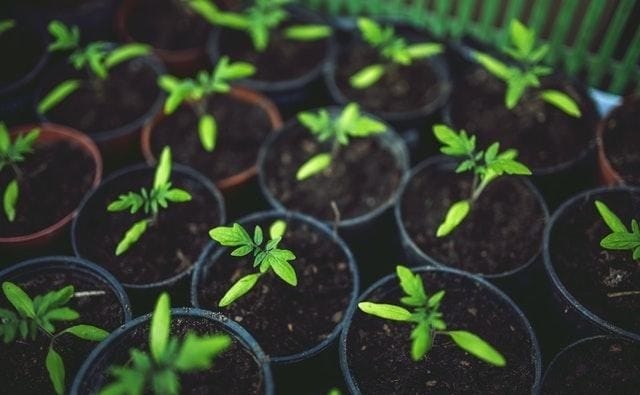From the air we breathe to what we eat, our environment has a significant impact on Public Health. However, these problems affect everyone differently. Some people are more likely vulnerable to environmental health problems because of genetic susceptibility. Others might suffer because of socioeconomic factors.
One thing is clear that public health has a direct link to our environment. So the ways we harm our environment come back to haunt us as mutated diseases. The pesticides we spray on our crops and the smoke our factories create inevitably end up in our bodies. According to the WHO, 24 percent of all deaths occur due to environmental elements.
Who Suffers the Most?
But most deaths are disproportionately concentrated in poor-income and high population countries. More than 4.1 million people in the southeast Asia Region die per annum because of environmental risk factors. In contrast, only 1.4 million Europeans die because of environmental issues. Even within the same region, the environment may impact poor or at-risk populations more than others. For example, older people are most at risk of diseases.
The reasons for environmental health inequalities are complex. We have to confront these problems for a sustainable future. While experienced professionals with online mph degrees are trying to improve the situation, there is still a long way to go.
How Does the Environment Affect our Health?
Most people face risk factors in their workplaces, homes, and communities. Several studies successfully prove that environmental hazards can increase the risk of respiratory infections, cancers, and other illnesses. Inadequate sanitation and hygiene can also increase the risk of viral diseases. Hazardous waste such as lead can cause adverse health effects such as blindness and death. Access to low-quality food can also affect public health. Most importantly, climate change and global warming can increase the rate of asthma, allergies, and other illnesses.
So, there are five fundamental areas in which our environment can affect our health:
Air Quality:
Humans need clean, fresh air to survive. Poor air quality has a link with COPD ( Chronic Obstructive Pulmonary Disease) and lung cancer. Furthermore, air pollution can also affect the birth weight of babies. However, one study found that people in developing countries are more likely to develop respiratory cancers than others. The primary reason was that several people within such countries still use coal for cooking. The harmful emissions from household coal and other solid fuel burning exposed women and children to toxic fumes that affect the respiratory tract. Therefore, any preventive measures to curtail air pollution need to begin by improving the living conditions in underdeveloped populations.
Water and Sanitation:
According to the CDC, more than 780 million people do not have access to safe drinkable water. That is not all. More than 2.5 billion people do not have adequate sanitation. You might be wondering why these figures are significant. The reason is that more than 2,200 children die every day because of diseases linked to inadequate water, sanitation, and hygiene. Polluted water also affects the plant and marine life that is our food source. It is also a breeding ground for organisms that cause diarrheal diseases. Again, low-income countries are more vulnerable to diarrheal diseases because they do not have the infrastructure to treat sewage. Most of their sewage water flows directly into rivers, lakes, and oceans. When people drink polluted water, they contract diseases and die.
Toxic Substances:
Most of our industries use materials and plastics that are harmful to the environment. They release hazardous elements into our ecosystem as nuclear waste, industrial waste, and atmospheric deposition. The toxic materials endanger wildlife and have a detrimental effect on human health. A recent example of how hazardous waste pollution can affect public health is the well-documented case of the Hinkley groundwater contamination. From 1952 to 1966, Pacific Gas and Electric Company dumped untreated hazardous wastewater into an unlined pond. The chemicals leaked into the town groundwater, and several people developed critical illnesses after drinking contaminated water. Even after several years, the drinking water remains toxic.
Food Access:
There is an inherent link between our environment, food access, and public health. Healthy soil is the foundation of a healthy food system. Agriculture-based pastoral areas depend on fertile land to provide nutritious food. But, overpopulation, globalization, and climate change have degraded the growing capacity of developing countries. Therefore, most food-insecure regions face the most public health concerns. Access to healthy food can reduce diabetes, heart disease, and pulmonary issues within a community. Public health institutions are trying to provide equitable access to healthy foods across communities.
Global Environmental Health:
The most significant threat to public environmental health is the potentially disastrous effects of climate change and global warming. Carbon dioxide emissions lead to health problems at the point of their release, but their long-term effects are devastating. Climate change affects the social and environmental aspects of public health. Over the next 30 years, climate change will cause 250,000 additional deaths per year from malaria, heat stress, and malnutrition. It will also increase health inequities and affect developing countries.
The way forward:
As the global population grows, environmental factors will continue to affect public health and quality of life. Evolving issues such as global warming and climate change will exacerbate the situation. However, low and middle-income countries will face the most challenges in public health. To deal with these problems, we must prepare to pay the seemingly exorbitant upfront costs for environmental clean-up.

1 Comment
Pingback: 5 Benefits of Switching to Natural Laundry Detergents